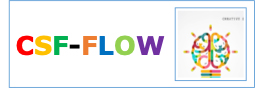Developing Diagnostic and Prognostic Biomarkers for CNS-ALL
Our current tests for CNS leukaemia rely on detecting leukaemia cells free-floating in the fluid around the brain (cerebrospinal fluid, CSF) using a microscope. The problem with these tests is that the majority of leukaemic cells are stuck to the protective cell layers that surround the brain (the meninges), so the free-floating cells are likely to represent only a very small proportion of the overall amount of leukaemia in the CNS.
New technologies can detect tiny amounts of genetic material released from cancers into body fluids (cell-free DNA) and measuring this cell-free DNA can indicate the presence of cancers before they become visible. In addition, it has been shown that levels of cell-free DNA rise prior to clinical relapse of tumours providing an early warning system for impending recurrence.
We are investigating whether we can use cell-free DNA, measured in CSF, to determine the level of CNS leukaemia and also to track how rapidly it responds to treatment. In addition, work in our laboratory has identified a number of small molecules (metabolites) in CSF that seem to indicate the presence of leukaemia, we are now testing how accurate these are on larger numbers of samples. These new tests have a lot of theoretical advantages over existing tests and are likely to be much better at detecting submicroscopic amounts of leukaemia that accurately reflect the overall leukaemia disease burden.
Knowing how much CNS disease is present, and how quickly it responds to therapy, should allow us to determine exactly how much treatment each child needs to completely eradicate all the leukaemia in the CNS.
 The current childhood, teenage and young adult ALL trial - ALLTogether1, involves 14 European countries. It includes a scientific sub-study, led by our Glasgow team, called CSF-FLOW. This study is collecting CSF during ALL treatment and will use flow cytometry, metabolomics and proteomics to accurately measure the amount of leukaemia in the CSF and how quickly it responds to treatment. We plan to use this information to identify children with:
The current childhood, teenage and young adult ALL trial - ALLTogether1, involves 14 European countries. It includes a scientific sub-study, led by our Glasgow team, called CSF-FLOW. This study is collecting CSF during ALL treatment and will use flow cytometry, metabolomics and proteomics to accurately measure the amount of leukaemia in the CSF and how quickly it responds to treatment. We plan to use this information to identify children with:
- very low amounts of leukaemia in the CSF who might be able to receive less brain-directed chemotherapy (to be tested in a future clinical trial).
- very high amounts of leukaemia in the CSF, or other high-risk features, who might be better cured with different treatment approaches (again to be tested in a future clinical trial)
CSF-FLOW will help us accurately measure leukaemia in the CSF for the first time. We hope it will allow us to revolutionise our approach to treating leukaemia in the brain by adapting the amount of treatment to the risk of leukaemia coming back.

